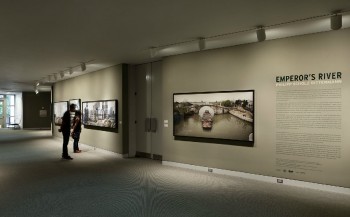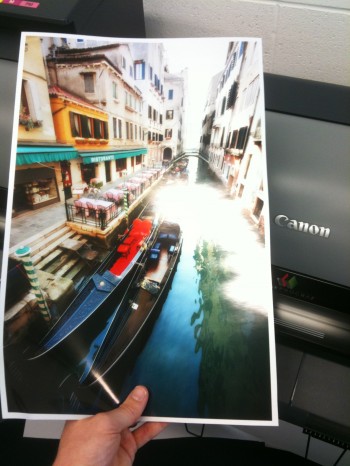They say a picture is worth a thousand words, but what about one that’s six feet tall, almost four feet wide and glows? Mike Ridinger, owner of Ridinger’s The Art of Photography in downtown Lewiston, Idaho, says the big photos he printed to hang in his storefront were worth not only a thousand words, but likely created more than a thousand impressions.
Ridinger explains that the town of Lewiston hosted its annual Hot August Nights car show, blocking off downtown for hundreds of show cars, live music and other activities. Thousands of people came from all over for the event, and Ridinger was ready for them at his downtown studio with five big prints: three senior portraits and two family portraits.
 “I like sitting in the studio and watching people come by to stop to look at them. They’re so big that people can’t help but look at them,” says Ridinger. “We also posted photos of the window displays on Facebook and we had 41 comments just yesterday.”
“I like sitting in the studio and watching people come by to stop to look at them. They’re so big that people can’t help but look at them,” says Ridinger. “We also posted photos of the window displays on Facebook and we had 41 comments just yesterday.”
Ridinger says he took his cue from The Gap and its storefront marketing approach. To give the prints more life at night, Ridinger backed them with halogen lights, creating a glow that lures people to the windows.
“We use the heavier Sunset Photo eSatin Paper for the display prints in our studio, but for this we chose a more economical and thinner paper, LexJet 8 Mil Production Satin Photo Paper, for the window displays,” says Ridinger.
Ridinger framed the prints with four-inch baseboard molding, stained the molding, cut it to size and stapled them together. The bottoms of the frames rest on the floor and are balanced with fishing line strung from the ceiling to the tops of the frames.
“Inkjet printing is our way of immediate marketing. I love it because if we want to put something up right away, we can do these big-time prints: we pick out the images and I just lay them out and print,” says Ridinger.
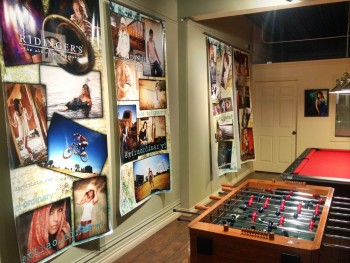 Ridinger adds that they’re in the process of re-doing all of their studio displays using Sunset Photo eSatin Paper and Sunset Select Matte Canvas. At any given time, he says, the studio features about 30 large wall portraits in three different themed areas: children, families and seniors.
Ridinger adds that they’re in the process of re-doing all of their studio displays using Sunset Photo eSatin Paper and Sunset Select Matte Canvas. At any given time, he says, the studio features about 30 large wall portraits in three different themed areas: children, families and seniors.
Ridinger also has a display program where he pre-sells prints for half off in exchange for being able to use them as display prints in his studio for a certain time period. “We call the client to see if they’re interested. If they are, they get a nice print for half off, which pays for my in-studio advertising,” says Ridinger.

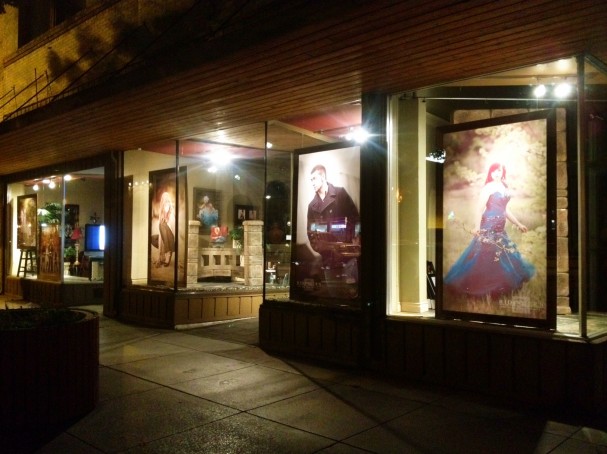
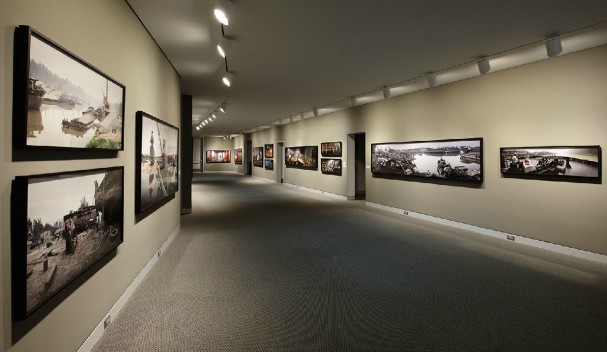
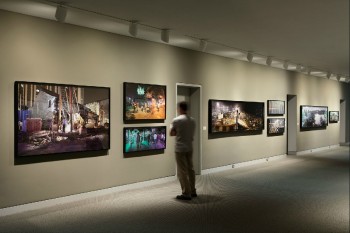 “It’s a self generated project that came about when I was invited to show my work in China at a photography biennale. That was my first excuse to go to China; I hadn’t had an opportunity before then. I decided that if I was going to go, I needed to educate myself about it. I came across multiple references to the Grand Canal and it seemed like something to follow. It’s just such a huge country and the Grand Canal would help define my direction; rather than wandering aimlessly for years, and still not really scratching the surface,” Rittermann explained.
“It’s a self generated project that came about when I was invited to show my work in China at a photography biennale. That was my first excuse to go to China; I hadn’t had an opportunity before then. I decided that if I was going to go, I needed to educate myself about it. I came across multiple references to the Grand Canal and it seemed like something to follow. It’s just such a huge country and the Grand Canal would help define my direction; rather than wandering aimlessly for years, and still not really scratching the surface,” Rittermann explained.